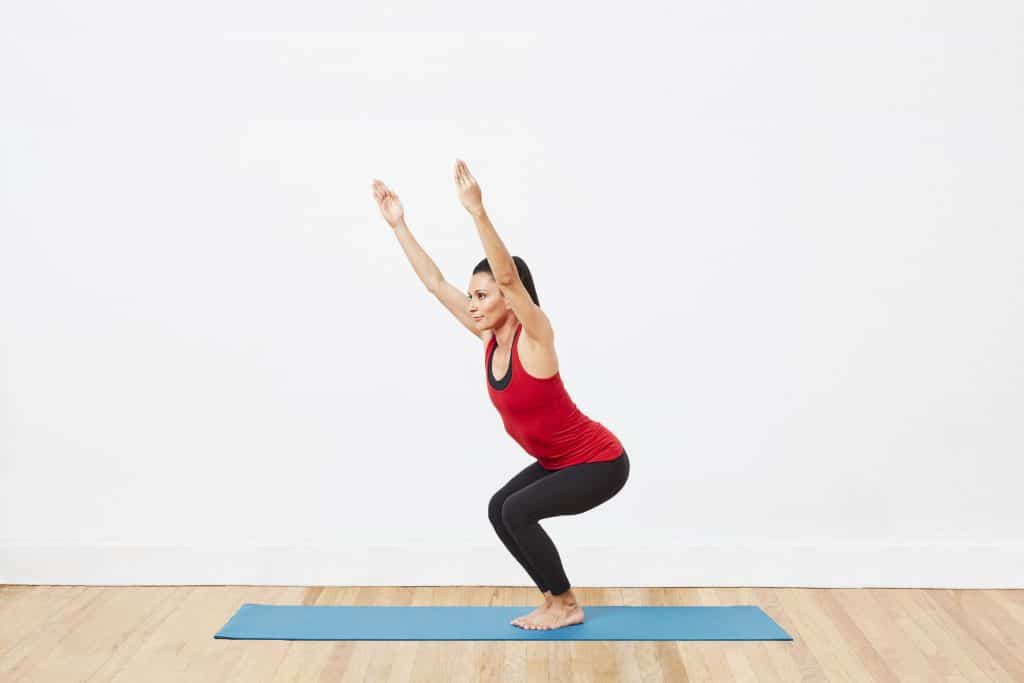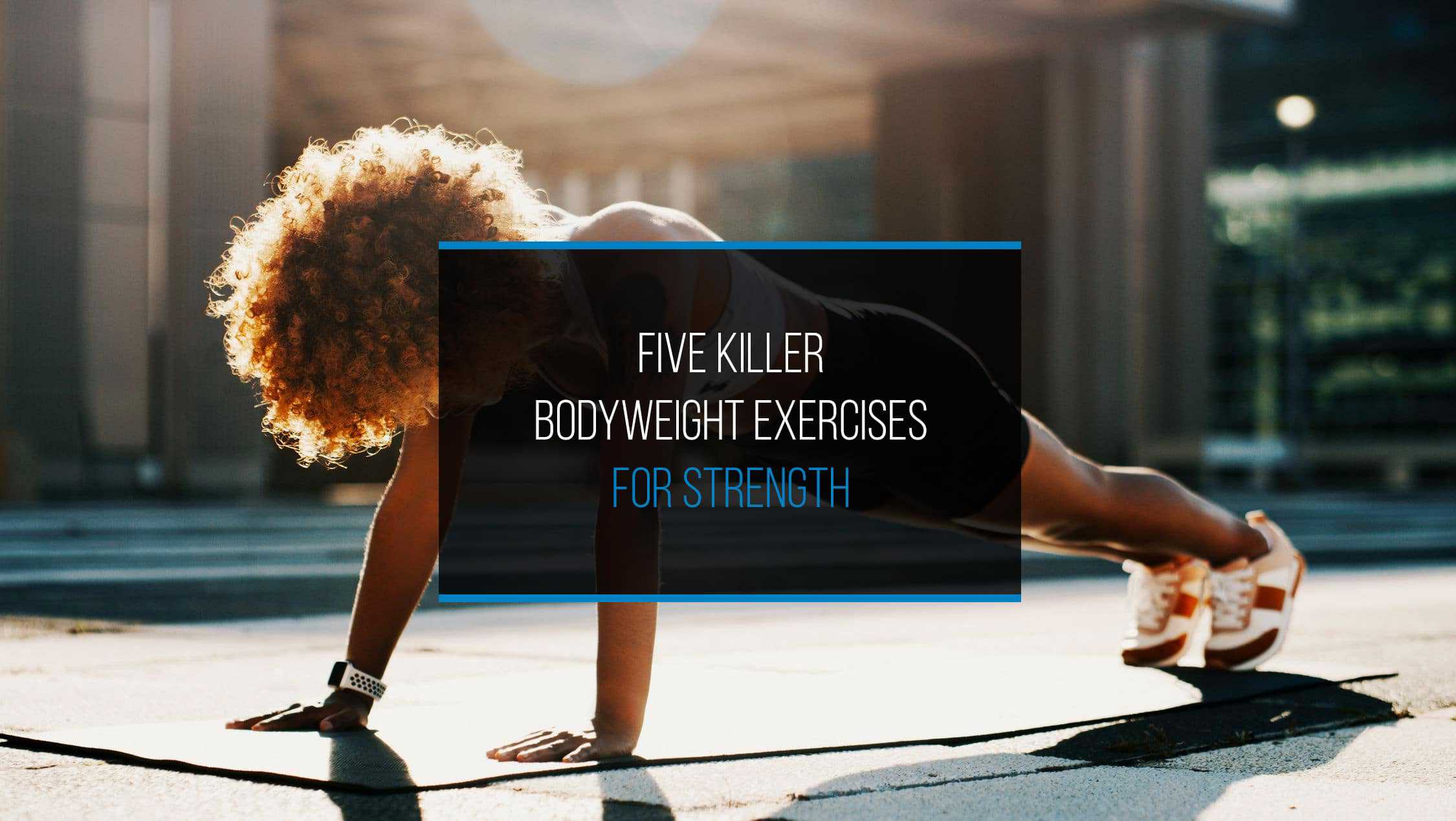Recent events have left many of us looking for ways to get a killer workout routine without the gym. Whether your gym is closed due to pandemic restrictions or you just want to avoid the commute, working out at home is no excuse not to get a fantastic workout. You already have the only workout equipment you need, your own body.
Your body is the best tool for creating a great workout with no equipment. Training exercises that force you to push or pull your own weight can build strength and tone your muscles just as good as weight lifting or using expensive gym machines. Bodyweight exercise also better prepare you to do everyday activities, like carrying your kids or heavy grocery bags. Here are the top five bodyweight exercises you’ll want to incorporate into your routine to build strength at home.
Squats
© Howcast on Youtube
Squats are a pretty standard exercise built into any routine. They multi-task, meaning they work for more than one muscle group at a time. Balance is required, which works your core and back. They burn more fat than other exercises due to muscle gains and promote circulation. The squat is also one of the most functional exercises because we squat down to pick things up all the time.
Personal trainers unanimously agree that squats are recommended when working out with no equipment. Squats tighten, tone, and strengthen your whole body, especially your legs and glutes. Single leg squats and double leg glute bridges done along with squats give you a fantastic lower body workout with significant glute activation. You can also do wall squats, sumo squats, or pistol squats for a change in your routine.
Squats are a tremendous muscle-building exercise, but make sure you’re doing them correctly. Your toes can face forward or out; your legs can be narrow or wide, depending on the squat’s variation. But always make sure your knees do not track out over your toes. This will lead to uncomfortable knee strain and a possibility of injury.
Lunges
© Passion4Profession on Youtube
Unlike squats, which require you to center your balance, lunges involve a major weight-shift forwards, backward, or laterally. Don’t be fooled into thinking this is just a lower body exercise. No matter what lunge variation you do, you are working your glutes, calves, and hamstrings and targeting your core and lower back to maintain balance. Lunges are great for increasing your hip flexor range of motion.
Squats train both legs at once, whereas lunges train one leg at a time. Anytime you are working unilaterally or on one side of your body, you increase your balance and coordination. Balance work = core work and everyone wants a strong core. Make sure you work both sides evenly, though, so you don’t create an imbalance.
As with squats, make sure you do this exercise safely. Don’t let your knees extend past your toes on any lunge. If it is, take a bigger step and move your foot further away from your body.
Planks
© Children’s Hospital Colorado on Youtube
Planks are an absolute favorite exercise when you have no equipment. They work your entire body, can be done anywhere, and there is a multitude of variations. Whether you’re just starting out and need to do them on your knees or have been working out forever and need a challenge, this exercise can fit your needs. You can even fit in some cardio by doing plank jacks.
Planks are simple, but simple doesn’t mean easy. They activate your entire core at the same time, along with glutes and back. Doing planks regularly has been shown to reduce back pain. Strengthening your abdominal muscles to support your body takes the strain off your back. Your posture will also improve, eliminating the back pain caused by slouching.As always, do your planks safely. If you’re not strong enough to keep your back flat, put your knees down. Letting your back arch will do more harm than good. It’s always better to modify an exercise until you’re strong enough to do the whole thing.
Push-ups
© Buff Dudes Workouts on Youtube
The classic push-up is the exercise everyone loves to hate, but they’re incredibly effective. Push-ups are a compound exercise. They work your upper body – triceps, biceps, deltoids, your core, and lower body. Push-ups are also a great cardiovascular exercise. Because they work so many muscles at once, they increase the amount of blood flow through your heart.
When you do them properly (and that’s important), you will prevent low back pain and reduce injury risk. If you’re someone who gets bored quickly, there are many variations you can try. Add shoulder taps, mountain climbers, or holding limbs up alternately to make them more effective. Or alternate between traditional push-ups and tricep push-ups. Move your hands wide and narrow, then do the same with your legs. Each variation will work muscles from different angles and make the exercise more intense.
Keep your back flat. Do push-ups on your knees to modify if you need. Arching your back too much risks injury.
Balancing Poses

Most at-home training regimens incorporate some sort of yoga or stretch day. There’s a reason for this. Stretching increases flexibility, which in turn gives you more significant muscle-building potential. Flexibility and strength work hand in hand. These types of exercises also increase strength using only bodyweight.
Plank pose, which we already discussed, Chair pose, High Lunge, Low Lunge, Balancing Half Moon, Tree Pose – all of these poses require balance and stability. Balance and stability are created by building a solid core. The stretching involved will also help reduce muscle soreness from previous workouts.
Even if you’re an expert bodybuilder, it’s important to incorporate stretching and balance work into your routine. These exercises can be done at the end of your muscle-building session to ‘stretch back out.’ They are guaranteed to help you build strength faster.
Using these bodyweight exercises will amp up your routine and help you build strength. By using your own body, you can create a simple, do-anywhere workout with no equipment.

